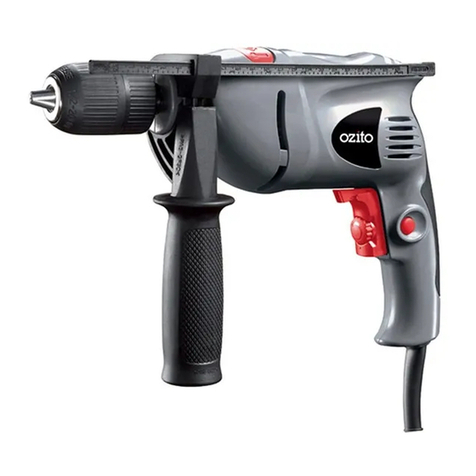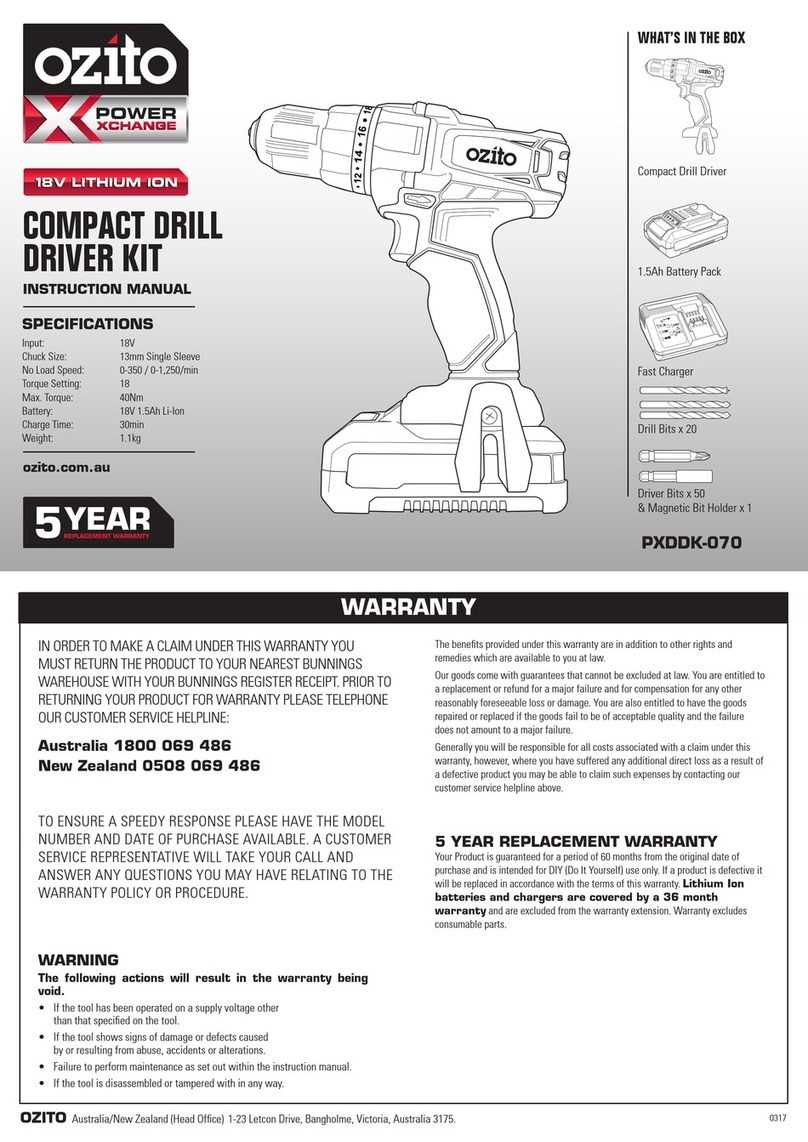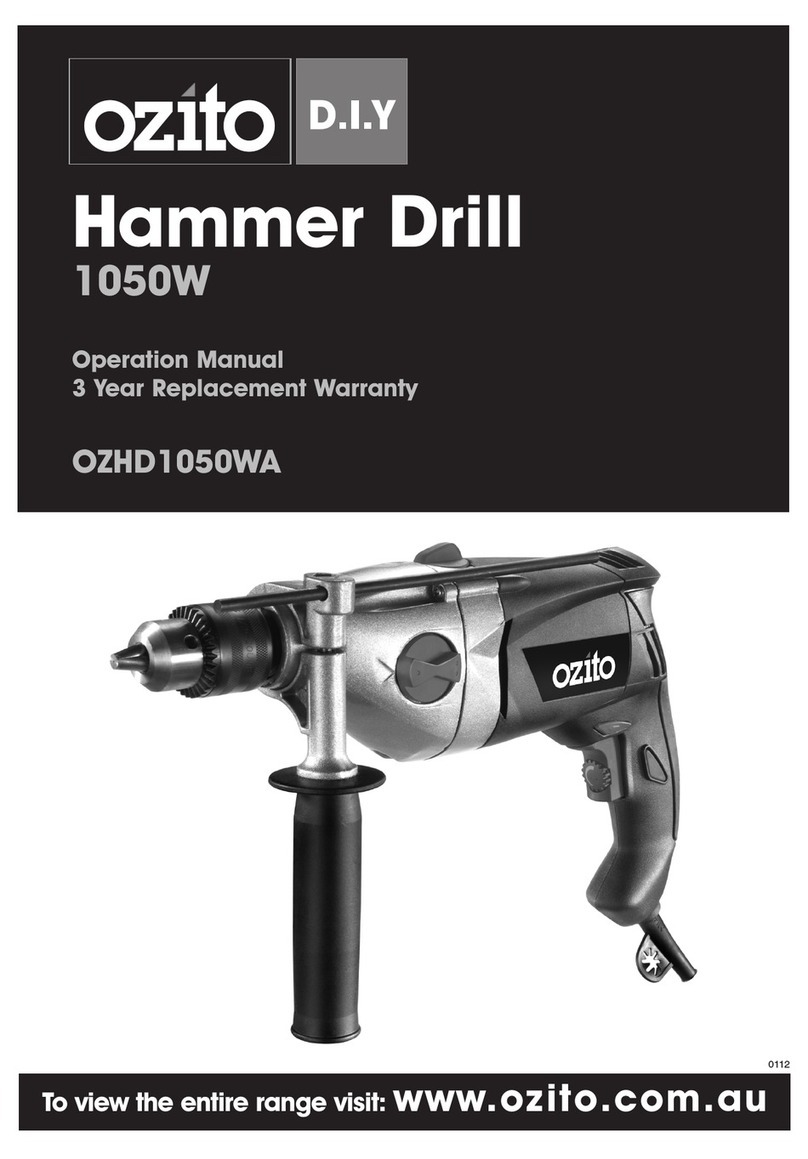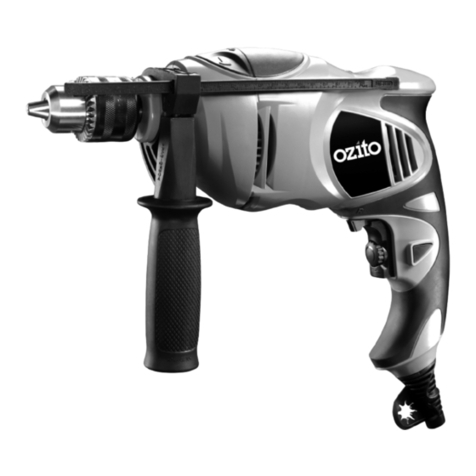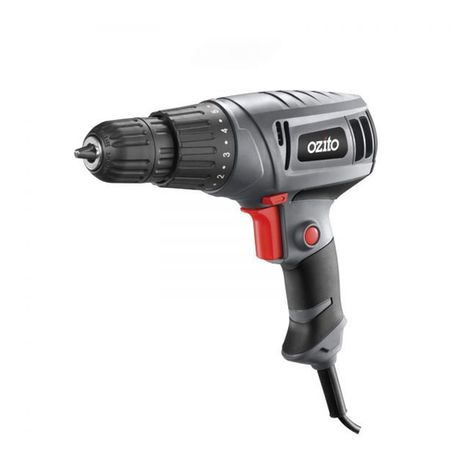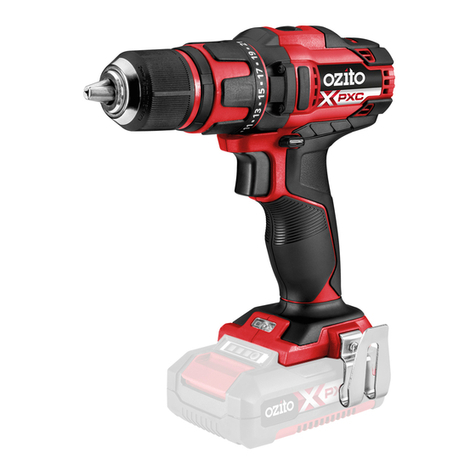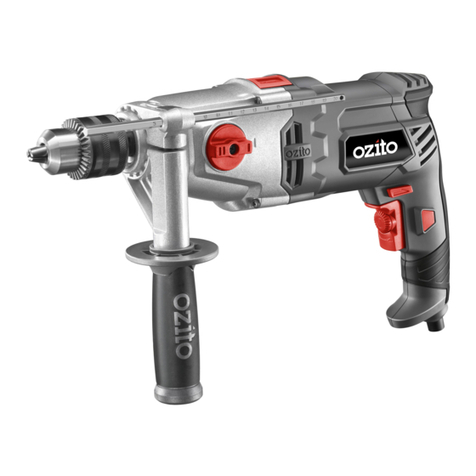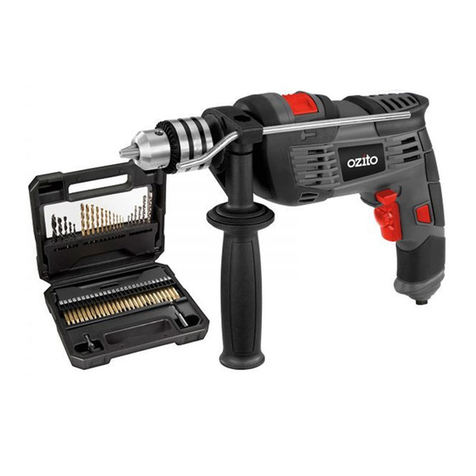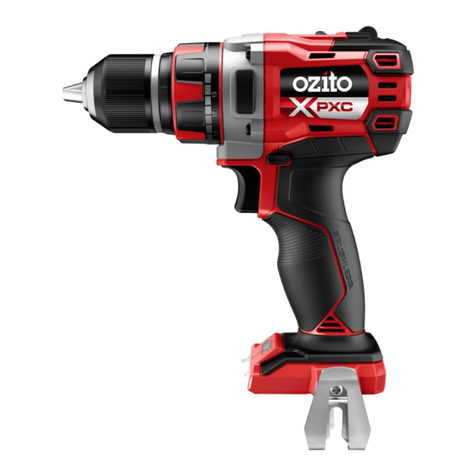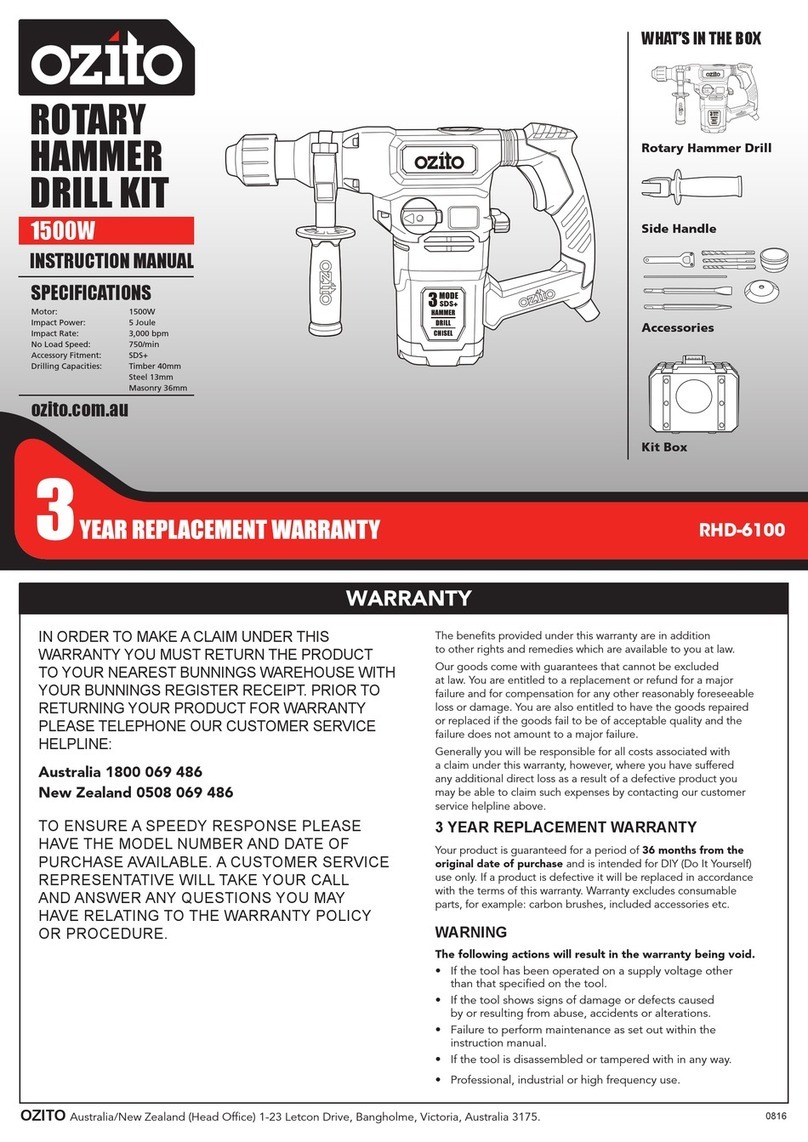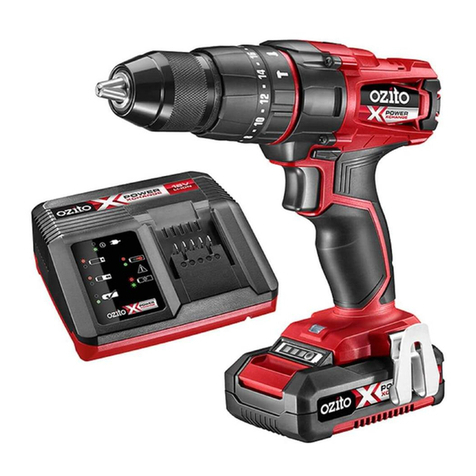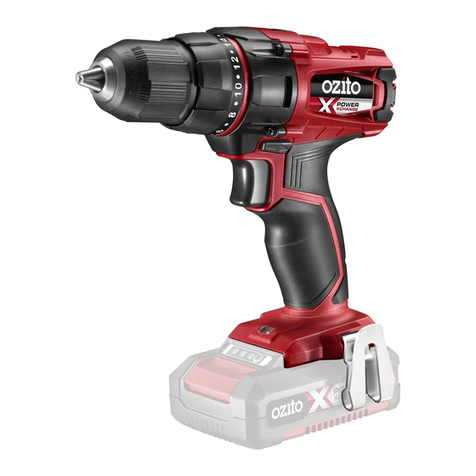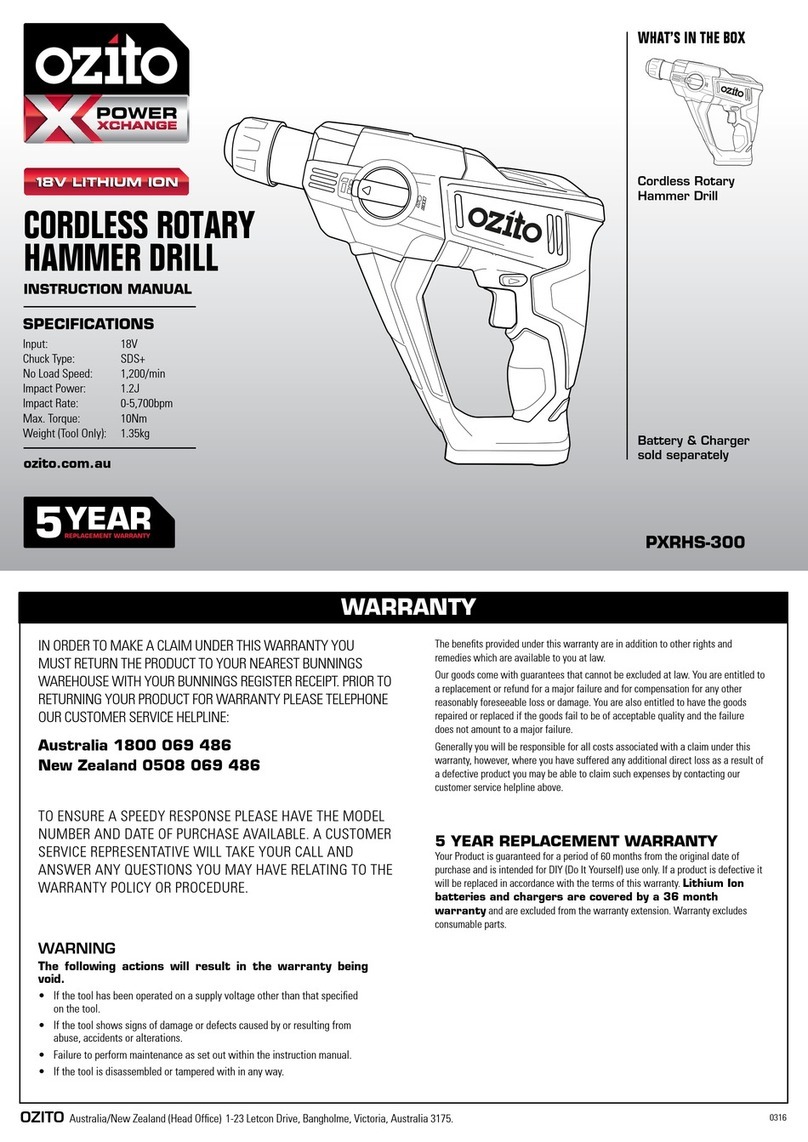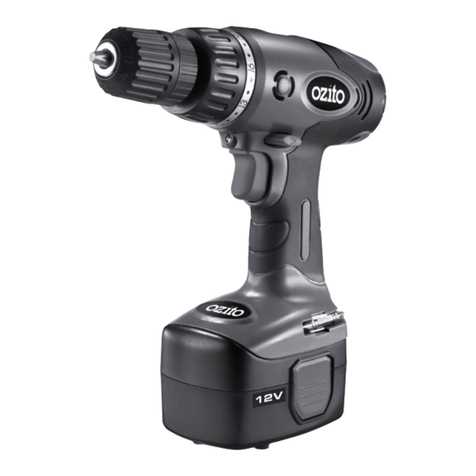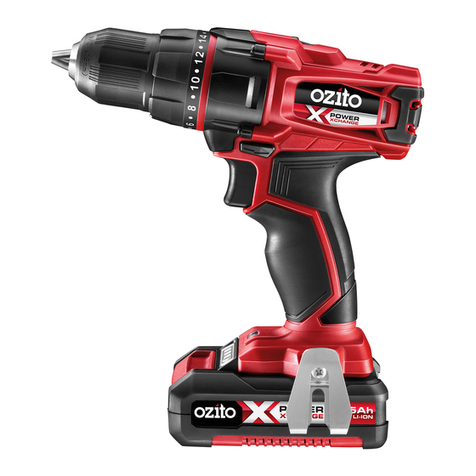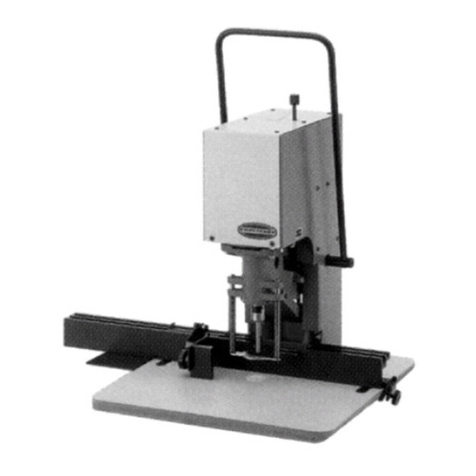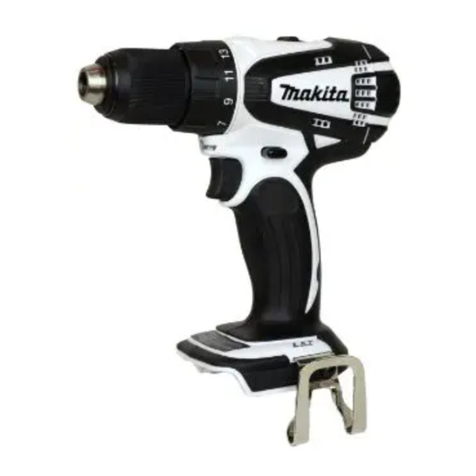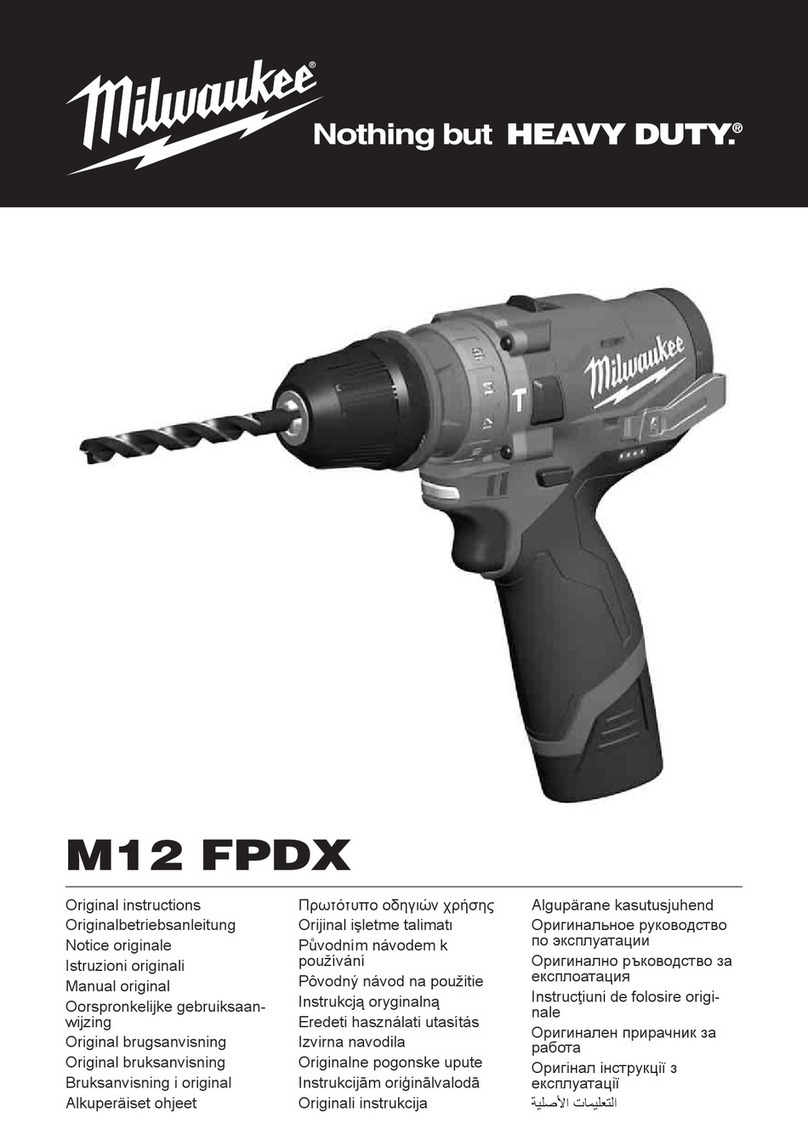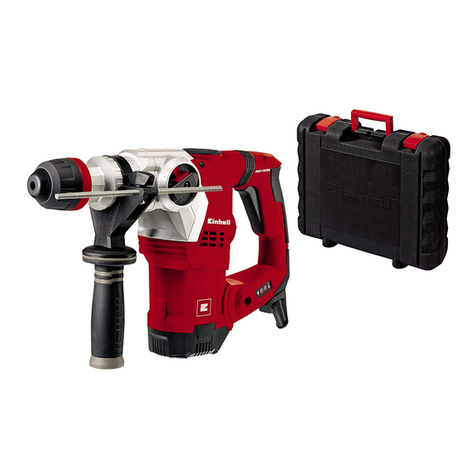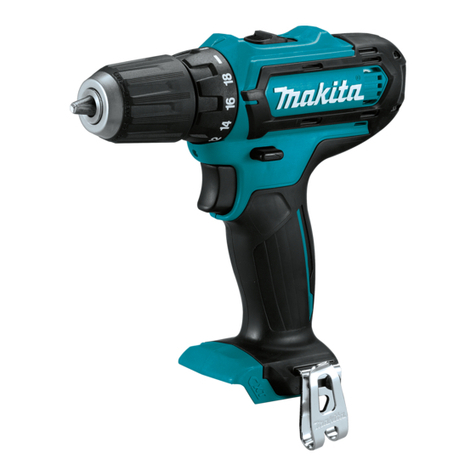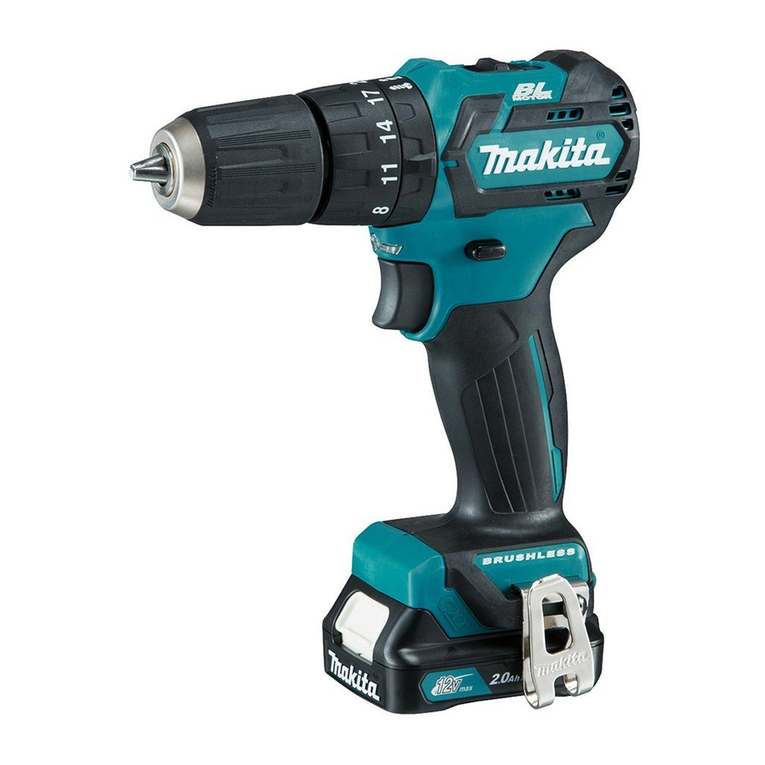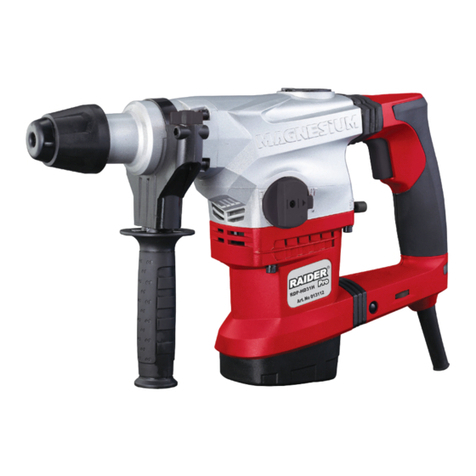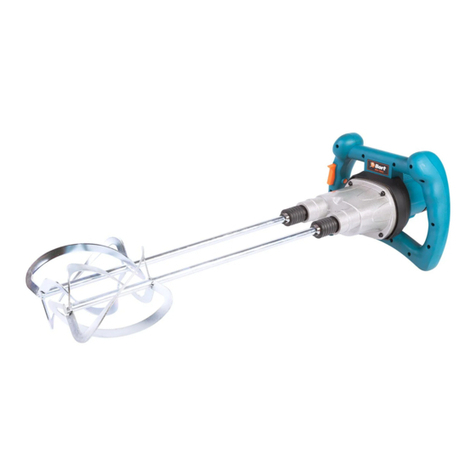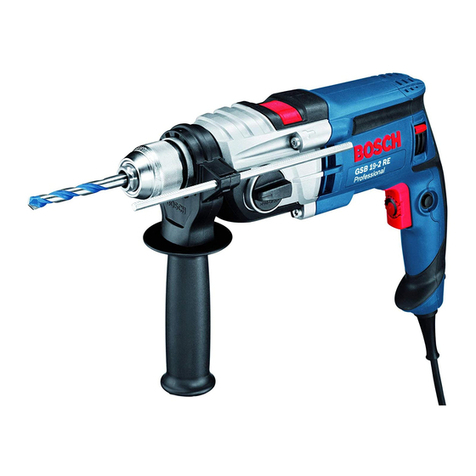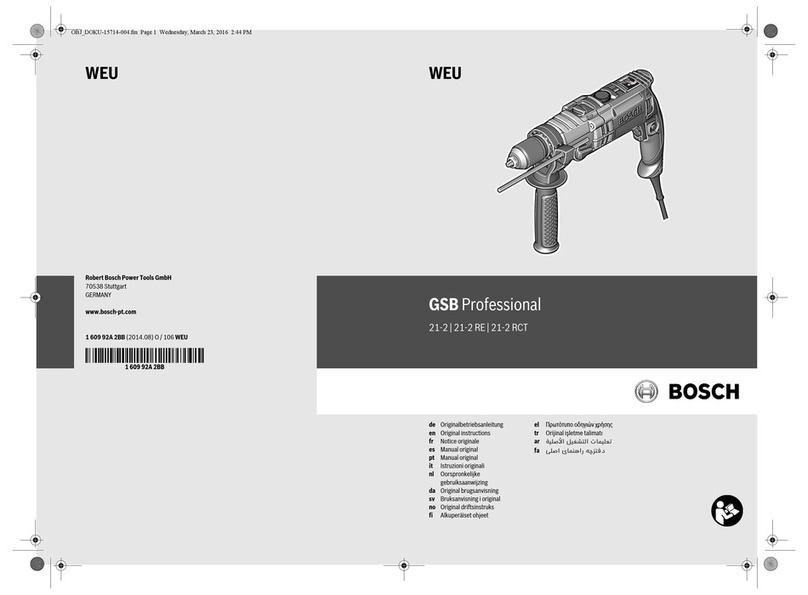WARNING! When using mains-powered tools, basic safety precautions, including the
following, should always be followed to reduce risk of re, electric shock, personal injury
and material damage.
Read the whole manual carefully and make sure you know how to switch the tool off in an emergency, before
operating the tool.
Save these instructions and other documents supplied with this tool for future reference.
The electric motor has been designed for 230V and 240V only. Always check that the power supply
corresponds to the voltage on the rating plate.
Note: The supply of 230V and 240V on Ozito tools are interchangeable for Australia and New Zealand.
This tool is double insulated in accordance with AS/NZS 60745-1;
therefore no earth wire is required.
If the supply cord is damaged, it must be replaced by an electrician or a power tool repairer in order to avoid
a hazard.
Note: Double insulation does not take the place of normal safety precautions when operating this tool. The
insulation system is for added protection against injury resulting from a possible electrical insulation failure
within the tool.
Using an Extension Lead
Always use an approved extension lead suitable for the power input of this tool. Before use, inspect the
extension lead for signs of damage, wear and ageing. Replace the extension lead if damaged or defective.
When using an extension lead on a reel, always unwind the lead completely. Use of an extension lead not
suitableforthepowerinputofthetoolorwhichisdamagedordefectivemayresultinariskofreandelectric
shock.
WARNING! Read all safety warnings and all instructions. Failure to follow the warnings and
instructionsmayresultinelectricshock,reand/orseriousinjury.
Save all warnings and instructions for future reference. The term “power tool” in the
warnings refers to your mains-operated (corded) power tool or battery-operated (cordless) power tool.
1. Work area safety
a. Keep work area clean and well lit. Cluttered or dark areas invite accidents.
b. Do not operate power tools in explosive atmospheres, such as in the presence of ammable
liquids, gases or dust. Power tools create sparks
which may ignite the dust or fumes.
c. Keep children and bystanders away while operating a power tool. Distractions can cause you to lose
control.
2. Electrical safety
a. Power tool plugs must match the outlet. Never modify the plug in any way.
Do not use any adapter plugs with earthed (grounded) power tools.Unmodiedplugsandmatching
outlets will reduce risk of electric shock.
b. Avoid body contact with earthed or grounded surfaces, such as pipes, radiators, ranges and
refrigerators. There is an increased risk of electric shock
if your body is earthed or grounded.
c. Do not expose power tools to rain or wet conditions. Water entering a power tool will increase the
risk of electric shock.
d. Do not abuse the cord. Never use the cord for carrying, pulling or unplugging the power tool.
Keep cord away from heat, oil, sharp edges or moving parts. Damaged or entangled cords increase
the risk of electric shock.
e. When operating a power tool outdoors, use an extension cord suitable
for outdoor use. Use of a cord suitable for outdoor use reduces the risk of electric shock.
f. If operating a power tool in a damp location is unavoidable, use a residual current device (RCD)
protected supply. Use of an RCD reduces the risk of electric shock.
3. Personal safety
a. Stay alert, watch what you are doing and use common sense when operating a power tool. Do
not use a power tool while you are tired or under the inuence of drugs, alcohol or medication. A
moment of inattention while operating power tools may result in serious personal injury.
b. Use personal protective equipment. Always wear eye protection. Protective equipment such as dust
mask, non-skid safety shoes, hard hat, or hearing protection used for appropriate conditions will reduce
personal injuries.
c. Prevent unintentional starting. Ensure the switch is in the off-position before connecting to power
source and/or battery pack, picking up or carrying the tool. Carryingpowertoolswithyourngeron
the switch or energising power tools that have the switch on invites accidents.
d. Remove any adjusting key or wrench before turning the power tool on.
A wrench or a key left attached to a rotating part of the power tool may result
in personal injury.
e. Do not overreach. Keep proper footing and balance at all times. This enables better control of the
power tool in unexpected situations.
f. Dress properly. Do not wear loose clothing or jewellery. Keep your hair, clothing and gloves away
from moving parts. Loose clothes, jewellery or long hair can be caught in moving parts.
g. If devices are provided for the connection of dust extraction and collection facilities, ensure these
are connected and properly used. Use of dust collection can reduce dust-related hazards.
4. Power tool use and care
a. Do not force the power tool. Use the correct power tool for your application. The correct power tool
will do the job better and safer at the rate for which it was designed.
b. Do not use the power tool if the switch does not turn it on and off. Any power tool that cannot be
controlled with the switch is dangerous and must be repaired.
c. Disconnect the plug from the power source and/or the battery pack from the power tool before
making any adjustments, changing accessories, or storing power tools. Such preventive safety
measures reduce the risk of starting the power tool accidentally.
d. Store idle power tools out of the reach of children and do not allow persons unfamiliar with the
power tool or these instructions to operate the power tool. Power tools are dangerous in the hands
of untrained users.
e. Maintain power tools. Check for misalignment or binding of moving parts, breakage of parts and
any other condition that may affect the power tool’s operation. If damaged, have the power tool
repaired before use. Many accidents are caused by poorly maintained power tools.
f. Keep cutting tools sharp and clean. Properly maintained cutting tools with sharp cutting edges are less
likely to bind and are easier to control.
g. Use the power tool, accessories and tool bits etc. in accordance with these instructions, taking
into account the working conditions and the work to be performed. Use of the power tool for
operations different from those intended could result in a hazardous situation.
5. Battery tool use and care
a. Recharge only with the charger specied by the manufacturer. A charger that is suitable for one
typeofbatterypackmaycreateariskofrewhenusedwithanotherbaterypack.
b. Use power tools only with specically designated battery packs. Use of any other battery packs may
createariskofinjuryandre.
c. When battery pack is not in use, keep it away from other metal objects, like paper clips, coins,
keys, nails, screws or other small metal objects, that can make a connection from one terminal to
another. Shortingthebatteryterminalstogethermaycauseburnsorare.
d. Under abusive conditions, liquid may be ejected from the battery; aviod contact. If contact
accidentally occurs, ush with water. If liquid contacts eyes, additionally seek medical help. Liquid
ejected from the battery may cause irritationor burns.
6. Service
a. Have your power tool serviced by a qualied repair person using only identical replacement parts.
This will ensure that the safety of the power tool
is maintained.
b. If the supply cord is damaged, it must be replaced by the manufacturer,
itsserviceagentorsimilarlyqualiedpersonsinordertoavoidahazard.
GENERAL POWER TOOL SAFETY WARNINGS
ELECTRICAL SAFETY
BATTERY AND CHARGER SAFETY WARNINGS
THIS MANUAL CONTAINS IMPORTANT SAFETY AND OPERATING INSTRUCTIONS FOR YOUR
BATTERY CHARGER.
1. Before using the charger read all instructions and cautionary markings on the charger, battery pack
and the product using the battery pack.
1. This charger is not intended for any uses other than charging rechargeable batteries. Any other use
mayresultinriskofre,electricshockorelectrocution.
2. Do not place any object on top of the charger or place the charger on a soft surface that may result
in excessive internal heat. Place the charger in a position away from any heat source.
3. To reduce risk of damage to the electric plug and cord, pull by the plug rather than the cord when
disconnecting the charger.
4. Make sure the cord is located so that it will not be stepped on, tripped over, or otherwise subjected
to damage or stress.
5. An extension cord should not be used unless absolutely necessary. Use of an improper extension cord
couldresultintheriskofre,electricshockorelectrocution.
6. Do not operate the charger if it has received a sharp blow, been dropped or otherwise damaged in
any way. Have it checked by an electrician or power tool repairer.
7. Do not disassemble charger. Take it to an electrician or power tool repairer when service or repair is
required.Incorrectreassemblymayresultinariskofelectricshock,electrocutionorre.
8. To reduce risk of electric shock, unplug the charger from the outlet before attempting any cleaning.
Removing the battery pack will not reduce this risk.
9. Never attempt to connect 2 chargers together.
10. DO NOT store or use the tool and battery pack in locations where the temperature may reach or exceed
40ºC (such as inside sheds or metal buildings in summer).
11. The charger is designed to operate on standard household electrical power (240 volts). Do not at-
tempt to use it on any other voltage!
12. The battery pack is not fully charged out of the carton. First read the safety instructions and then
follow the charging notes and procedures.
13. The longest life and best performance can be obtained if the battery pack is charged when the air
temperature is between 18 - 24ºC. Do not charge the battery pack in an air temperature below 10ºC
or above 40ºC. This is important and will prevent damage to the battery pack.
14. Do not incinerate the battery pack even if it is seriously damaged or is completely worn out. The battery
canexplodeinare.
15. Never attempt to open the battery pack for any reason. If the plastic housing of the battery pack breaks
or cracks, immediately discontinue use and do not recharge.
16. During charging, the battery must be placed in a well ventilated area.

